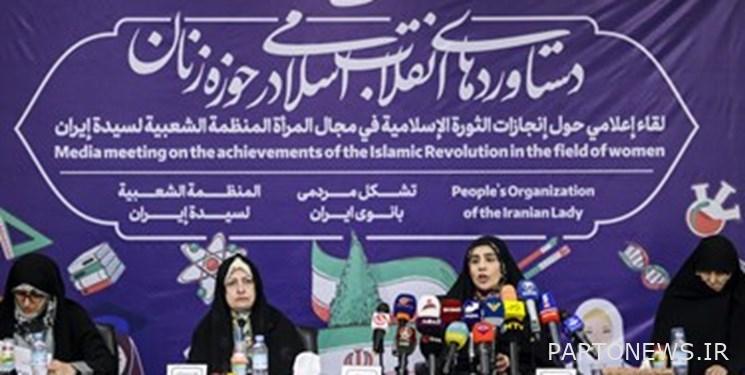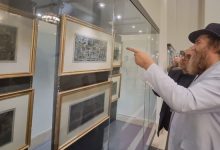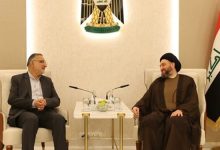40% growth in the training of gynecologists after the revolution/13th government increased the allocation of sports space for women

According to Fars News Agency’s community group; desert enamel; While congratulating the birth of Hazrat Fatemeh Zahra (PBUH) at the media meeting on the achievements of the Islamic Revolution in the field of women, the head of Basij Women’s Community said: Considering that the status of women in the Islamic Republic has been questioned by the media and opposing systems in recent months, we decided to hold a meeting. Media to defend the position of women in the Islamic system by citing accurate and reliable statistics, many of which are extracted from foreign sources.
People’s Organization of Iran’s Lady
A desert about the popular organization of the Iranian lady; The founder of the media meeting also said: This organization was created to realize the third model of the Muslim woman, which is the negation of the eastern and western model of women, which has decided to work both in the domestic and foreign fields.

40% increase in the training of gynecologists
In the continuation of this meeting, Atefeh Samai; The doctor and specialist in obstetrics and gynecology surgery said about the medical and educational advancements of women after the revolution: After the revolution, the entry into post-graduate education for women, especially medicine, was approved by elders and scholars. The reason for this was to protect women’s privacy when visiting doctors of the same sex.
He added: In this regard, special gynecological studies for women and specialized gynecological hospitals were also established. Today, with a 17% growth, we have reached 60,000 female doctors in 2018. From 597 female specialists before the revolution, we have reached 30 thousand specialists and a 40% growth. Before the revolution, there were no subspecialized doctors, but now we have about 5 thousand subspecialized doctors minus fellowships. Now, we have 60 midwives for every 100,000 women, which is in line with international standards.
Samai also said about the welfare and security of health and treatment for women: even the most remote areas of our country have access to all kinds of screenings, including breast and fetal cancer screening. While in a country like Norway, which ranks 3rd in terms of welfare, a pregnant mother may never have the opportunity to see a doctor during her pregnancy and may only be visited by a midwife. Also, Iran has the lowest statistics regarding cervical cancer, which is the most common cancer for women in the world.

We increased the use of sports spaces by women
The next speaker of this meeting; Maryam Kazmipour; He was the vice president of women’s sports development in the Ministry of Sports and Youth, who, in response to the journalists’ question about the state of women’s sports space per capita, said: Currently, there are 26,700 active sports clubs in the country, of which 7,500 are exclusively for women and 4,100 are joint clubs with There are different hours for men and women.
Kazemipour added: One of our important tasks in the 13th government was justice-oriented per capita sports space for women. For this reason, in the first notification to the general administrations of the provinces, we demanded that sports spaces be divided between men and women in a justice-oriented manner. Also, the hours of the clubs should be allocated according to the occupations of women and not be like that only the morning hours are for the use of women, so that working women and even some housewives cannot use the sports facilities.
The Deputy of Women’s Sports Development of the Ministry of Sports added: These announcements led to an eighteen and a half percent growth in the use of gyms and sports facilities by women. Of course, in order to increase this number, we must also use the capacity of the private and semi-private sectors that allocate their sports spaces only to the members of their organizations.
Kazemipour also said about the pilot project of Aftab girls in Hormozgan: 150 thousand nomadic and rural girls of boarding schools were educated in public and heroic centers to exercise and physical health in the local and local environment, as well as the lifestyle and modification of the life pattern of the women of their region. Promote sports.

After the revolution, the security of women in the field of culture and art has been ensured
Maryam Yaminpour, a writer and film critic, spoke about the status of women in the field of art before and after the revolution and added: “Women in movies before the revolution were passive and were only used for dancing, singing and acting.” But according to Imam Khomeini (RA) after the revolution, we are not against cinema, but we are against prostitution. Now women can go to artistic environments with safety and we have active, respected and respected women in cinematographic works.
Yaminpour, in response to a Fars reporter’s question about why even after 43 years of the Islamic Revolution, sometimes news about moral anomalies are published in some artistic circles, said: When after our revolution, women are seen as mothers, wives, children and We introduced socially active women, we should not expect the West to accept this and this reading of women from us. So it is obvious that they want to act and confront us in order to make the art space unsafe.

He added: There are some issues and facts that need to be dealt with, but what is happening in the field of culture, art and cinema in general shows that all efforts have been made to ensure the safety of women.
end of message/
You can edit this article
Suggest this article for the first page

